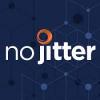Seamless, efficient collaboration in an all-in-one environment is a must-have for today’s distributed teams — Unified Communications as a Service (UCaaS) delivers it. The following article provides an overview of the leading UCaaS providers and what they offer in terms of features, functionality, integrations and/or partnerships.
What is UCaaS: A Quick Recap
UCaaS is an integrated set of communications technologies encompassing traditional office telephony — like call routing, call hold, and transfer — along with modern tools like email, instant messaging, video calls, and even AI-powered automation. UCaaS vendors combine these features in a single cloud-based app, so businesses don’t have to juggle multiple services. These tools are essential for today’s businesses because they make communicating easier and more efficient.
Users enjoy access to the entire range of features across varying locations and devices while clients can avoid the cost and complexity of implementing on-site infrastructure. All this is possible through Voice over Internet Protocol (VoIP), cloud-based computing and storage instead of on-premises hardware. These tools, and others included in UCaaS platforms, allow people to work together in real time, no matter where they are located. These tools can be integrated with other business software and leveraged to improve company operations. And as a business grows, UCaaS tools can be scaled up to handle more users and/or provide new features.
The Leading UCaaS providers for 2023 and 2024
The UCaaS provider space is rapidly commoditizing as these vendors have largely reached feature parity with one another. The vendors highlighted here are the major players in the UCaaS space, but there are other, smaller companies offering UCaaS solutions.
According to Omdia analysts, at the end of 2022 there were approximately 102 million UCaaS lines currently in use globally. These lines include Microsoft Teams, Zoom, Cisco Webex, Dialpad, as well as all the others listed here. Also according to Omdia, there are more than 215 million private branch exchange (PBX) lines in use globally. (Note: Omdia and No Jitter are both owned by Informa Tech.)
Growth in the UCaaS space will come from several sources:
- Organic employee growth within companies that have moved to UCaaS.
- Organic features/function growth from within those UCaaS-using companies – i.e., those companies upgrade from one UCaaS tier to another, add new features, etc.
- Companies moving from a PBX to UCaaS – i.e., X number of PBX lines becomes Y number of UCaaS lines.
The following vendor blurbs do not represent an exhaustive list of comparable features for each vendor. That is impossible to achieve from summarizing each company’s publicly available product information. Nor should the following short profiles be construed as advice on which vendor is “better” for a given enterprise. Obviously, it is incumbent upon an enterprise’s IT team to perform their own due diligence on each vendor, their products and, in so doing, evaluate how those products’ features and functionality align with their individual company’s communication and collaboration requirements – in addition to any other unique requirements such as accessibility, uptime, pricing, existing features and functionality, privacy and security needs, integrations with other platforms, etc.
8x8
8x8 offers its eXperience Communications Platform which provides increasing functionality designated as X1 through X8. Across this series, 8x8 offers enterprise-grade voice, unified communications, video meetings, team collaboration, presence, messaging, chat, and contact center functionalities. The company also offers standalone software as a service (SaaS) (services for contact center, video meetings, and enterprise communication APIs. With those APIs, 8x8 enables integration with third-party applications (e.g., Microsoft Teams, Salesforce, Google Workspace, and more). 8x8 also offers a browser-based solution that enables comparable functionality to its desktop and mobile applications.
Avaya
With over 40 years of experience in the field, and emerging from two bankruptcies, Avaya has held strong as one of the top premises-based unified communications, PBX and call center solution providers. As detailed in the No Jitter Avaya is Back article, after its most recent bankruptcy Avaya has streamlined and rationalized its products. The company still offers a comprehensive package that includes cloud-hosted PBX features, integrations with popular third-party tools, and mobile device access. Avaya has partnered with RingCentral to provide a multitenant UCaaS solution: Cloud Office. Pricing for Avaya’s Cloud Office product is tiered.
Dialpad
For its business unified communications products, Dialpad offers a cloud PBX, chat and SMS, fax and voicemail, ring groups (departments) file sharing, presence, meetings, and video conferencing. Dialpad’s meeting and voice solutions offer live transcription and call summaries. Dialpad will also integrate with productivity applications such as Salesforce, Zendesk, Microsoft 365 and Google Workspace. Dialpad offers three business communications plans of which one is geared toward large enterprises, and two meeting pricing plans.
GoTo
GoTo offers a full suite of unified communications and collaboration solutions, including telephony (via GoTo Connect), meetings, messaging, video conferencing, virtual events, and training. GoTo’s videoconferencing solution can occur from any device and browsers do not require a download to join in. Via GoTo Room, the company offers hardware kits that can turn conference rooms into meeting rooms that can support and include remote participants. The company’s solutions also support remote IT capabilities. The company’s pricing consists of three tiers of which one is targeted at larger enterprises. The two lower tiers support adding features/capabilities on an ad hoc basis.
Microsoft
One of the most widely used UCaaS platforms today, Microsoft Teams continues to roll out new features at a rapid pace. On top of its natural integration with popular Microsoft apps, top-line security, and options for integration with preexisting phone infrastructure via Operator Connect, some enterprise-class Teams subscriptions will soon boast Copilot, Microsoft’s generative AI-powered assistant. Recently, Microsoft announced it would unbundle Teams from its Microsoft 365 and Office 365 suites in the European Economic Area (EEA) and Switzerland. Teams’ three-tiered plans are affordable across all business sizes. Note that Microsoft also offers enterprise-, frontline-, government- and nonprofit-specific licensing tiers.
Mitel
Mitel provides a large suite of UC and collaboration solutions, as well as IP and DECT phones, targeted at companies of all sizes. Mitel offers cloud-based and on-premises UC solutions. Mitel’s MiCollab is a collaboration tool that provides a unified platform for voice, messaging, and meetings capabilities for users. Mitel also introduced cross-launch capabilities for various meeting platforms, including Teams, Zoom, and RingCentral, to name a few. The latest release of MiCollab also includes integrated SMS capabilities. Mitel’s pricing is not public, but it does offer some guidance on how to think about the cost of deployment.
Nextiva
Nextiva offers a range of products for UC at the forefront of which is the NextivaONE application which offers telephony, call routing, screen sharing, SMS/MMS, fax, voicemail, video meetings, collaboration, chat, and messaging, via desktop and mobile applications. Nextiva has three pricing tiers, with the largest feature set relegated to the top tier. That tier includes integrations to Microsoft and Salesforce while the first two tiers do not.
RingCentral
Two key strengths set apart RingCetral MVP, RingCentral’s UCaaS offering: customizability and mobile-first design. MVP also integrates with multiple other platforms, from ServiceNow, DocuSign and Slack to Salesforce, Google and Microsoft Teams. The platform also provides the basics: telephony, video meetings, messaging, SMS, along with other capabilities such as push-to-talk, whiteboarding, webinars and cloud-based faxing. RingCentral is also integrating generative AI-powered transcription and assistance. The company also offers a mobile app with a high level of capabilities. Operating on a three-tiered model, RingCentral’s pricing sits at the higher end of the market, reflecting its rich feature set.
Sangoma
Sangoma offers business UC products for the cloud and premises, as well as end point devices such as desk phones, portables, and headsets. On the cloud-based UC front, Sangoma offers video meetings, collaboration solutions, fax, voice calling, mobile and desktop applications via Sangoma applications, as well as voice integration for Microsoft Teams. Their UC solutions offer other integrations, as well, such as Salesforce. The company offers different packages and pricing geared toward different sized companies. Switchvox is the company’s on-premises solution, while Switchvox Cloud is the company’s “as a service” offering. CommUnity is the company’s solution geared toward multi-site businesses.
Vonage
Vonage offers a suite of voice, messaging, SMS, video meeting, fax, virtual receptionist and phone functionality across its desktop and mobile applications. It also offers support for business phones from Panasonic, Poly and Yealink among others. Overall, the company touts more than 50 voice and UC features including call routing, presence, email, SMS and support for integrated telephony. Vonage offers several pricing tiers that provide different levels of capabilities targeted at different needs and business sizes, including a plan that specifically includes a mobile app. Vonage is owned by Ericsson, a major provider of telecommunications and cellular equipment.
Webex
Cisco Webex is, in part, a UCaaS platform that stands apart for its quickly evolving feature set. Notable benefits include intuitive application management through Webex Control Hub, global availability, integration with Cisco’s hardware product line, and uptime guarantees. This is on top of a broad and deep UC suite with business texting, messaging, meetings and collaboration, telephony, events, and webinars, whiteboarding, etc. Webex also incorporates AI-powered optimizations to its audio/video experiences, and provides real-time transcriptions, closed captioning and translations, as well as summarization. Webex offers a tiered subscription plan as well as an enterprise-only tier that is geared toward large companies. Note that calling/telephony services can also be included, as well as webinar and event capabilities.
Zoom
This videoconferencing leader Zoom remains a standout choice for secure, HD video meetings — and it has transformed itself into a leading UCaaS company. Zoom’s UCaaS package, Zoom One, covers telephony with a cloud VoIP system and offers whiteboard functionality, instant messaging, and on-demand video chatting with calendar integration for easy scheduling. Zoom One’s six-tiered pricing model makes it highly scalable, accommodating small businesses through to multinational corporations. Zoom has also begun integrating generative AI into its portfolio. The company also offers integrations with audio-visual equipment for connected conference rooms and other collaboration spaces. Zoom’s pricing tiers are available online.
Best UCaaS Providers: A Summary
Choosing the “best” UCaaS provider is dependent on your unique company requirements. These include many factors such as, what your company can afford to spend on a UCaaS solution, what level of security is required, what specific features and functionality are necessary versus those that might be “nice to have.” Check out this article for a more detailed look at how to choose a UCaaS provider for your business.










